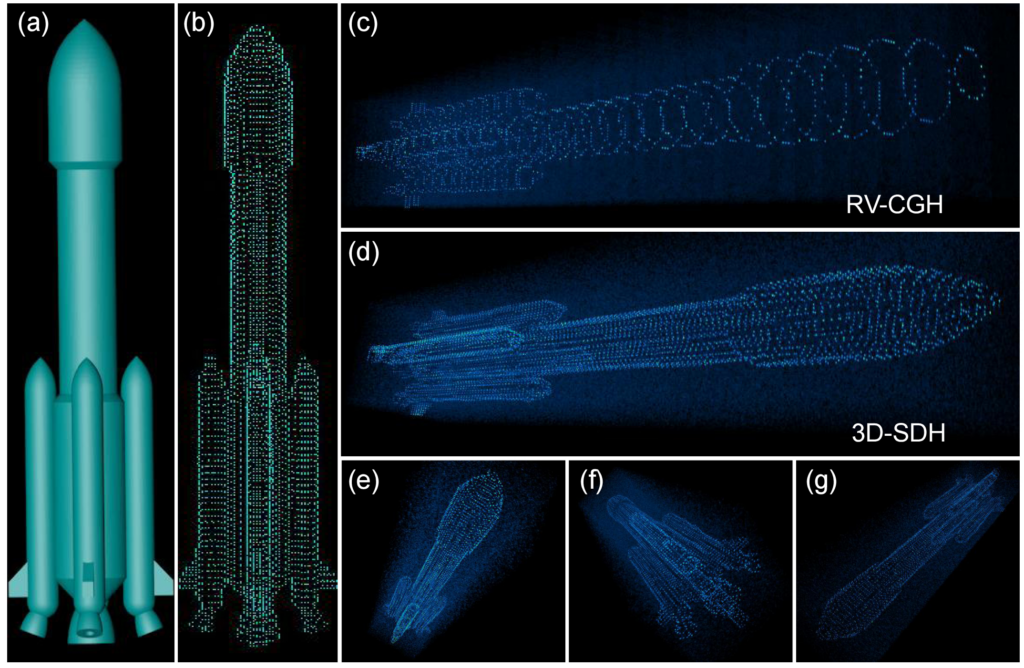In new research led by scientists at the University of Science and Technology of China, the authors have developed a novel 3D holographic projection technique called 3D scattering-assisted digital holography (3D-SDH) that aims to achieve high-density, crosstalk-free, wide-angle, and large-volume 3D holographic projections with ultra-fine depth control. This technology could improve depth control in realistic-looking 3D displays, making it particularly relevant for fields like virtual and augmented reality, optical encryption, data storage, 3D imaging and sensing, and holographic optical trapping.

Interference occurs because holography involves the manipulation and superposition of light waves to create a 3D effect. When multiple layers of a 3D image are projected closely together, the light waves from each layer can interact with one another, causing them to blend or interfere with each other. This unwanted interaction ultimately reduces the overall quality and realism of the 3D holographic display. Crosstalk is the result of interference in holography creating unwanted effects, and distorting images.
In order to experimentally validate their new 3D holography concept, the researchers built a prototype 3D-SDH projector for implementing dynamic 3D projections. The system, as shown above, consists of a thin zinc-oxide (ZnO) nanoparticle layer, which acts as the scattering medium, and a digital micro-mirror device (DMD) with 768×768 pixels.
The DMD, with a specific configuration known as the 4-f setup, serves as a high-speed wavefront shaper that modulates the incoming light according to the hologram’s instructions. The term “4-f” comes from the fact that the total optical path length between the object, lenses, and image is four times the focal length (f) of the lenses. This configuration is often used for spatial filtering, image processing, and holography applications.
To create a 3D hologram for multi-plane projection, they calibrated the transmission matrix (TM) for each image plane, as well as the polarization-related TMs for vectorial projection. TMs are mathematical representations of how light propagates and interacts with a medium or optical system, capturing the changes in amplitude and phase of the light waves.
After calculating the hologram, the researchers converted it into a binary pattern using a super-pixel encoding method, which was then displayed on the DMD. The hologram was illuminated with a collimated 532-nm laser beam, and the DMD continuously updated the holograms to create dynamic 3D projections.
The researchers conducted simulations of multi-plane 3D projection using 3D-SDH to demonstrate its capabilities.
- (a) They created a 3D sketch of a rocket to be displayed.
- (b) They made a point-cloud model of the rocket, which was used to calculate the 3D hologram.
- (c) A volume-rendered image of the 3D rocket was projected using the RV-CGH method and a single 1000×1000-pixel hologram. The 3D projection consisted of 32 images with a depth interval of 3.75 mm, and the 3D image was reconstructed by capturing images at all projected planes and combining them using maximum-intensity projection.
- (d) They then used the 3D-SDH method to project a volume-rendered image of the object onto 125 image planes with a uniform distance of 0.96 mm, using a single 1000×1000-pixel hologram.
- (e)-(g) Finally, they showed volume-rendered images of the simulated 3D rocket from different perspective views to further demonstrate the capabilities of the 3D-SDH method.

The researchers seem to have demonstrated that improved performance can be achieved by using a higher-pixel-count DMD, larger 3D TM, and replacing the ZnO layer with an ultrathin metasurface element. Overall, this method seems to offer better depth control, higher quality projections, and more complex 3D scenes for holography.
Reference
Panpan Yu, Yifan Liu, Ziqiang Wang, Jinyang Liang, Xingsi Liu, Yinmei Li, Chengwei Qiu, Lei Gong. Ultrahigh-density 3D holographic projection by scattering-assisted dynamic holography. Optica, 2023; 10 (4): 481 DOI: 10.1364/OPTICA.483057

